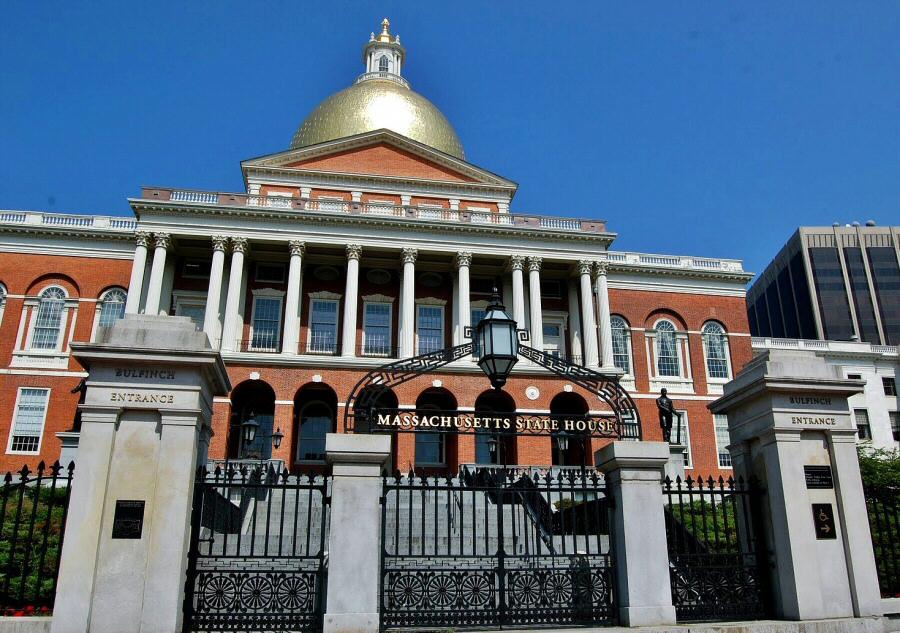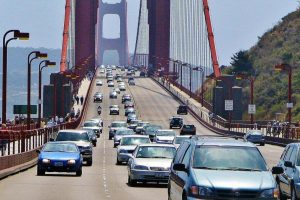In your Boston visit, In the east coast of the United States, you have an essential appointment with him Freedom Trail, a downtown tour of 16 historic sites, each an authentic American treasure.
To this day, the Freedom Trail It is a unique collection of museums, churches, meeting houses, cemeteries, parks, and even a ship, where you will find informative signs that tell the complete history of the American revolution.
In our coast to coast trip we had the chance to tour the Freedom Trail, which in practice is a route marked by red bricks that is about three and a half kilometers long.
We started our tour in a corner of the park Boston Common.
Below I detail the main characteristics of these 16 historical milestones of Boston.
Boston Freedom Trail
1. Boston Common: The Freedom Trail starts in the current park Boston Common, as it was the area where British forces were camped during the occupation from 1775 to 1776.
2. Massachusetts State House: East boston building It is still used today as the seat of the Massachusetts state government.
3. Park Street Church: This church is known for having hosted meetings and events of a political, social and human nature during the revolution.
It should be noted that in 1829, William Lloyd Garrison, gave a speech from the pulpit condemning church slavery. He was the first to do it in public.
4. Old Granary Burial ground: Some of the most famous revolutionaries in Boston were buried in this cemetery, including John Hancock, Samuel Adams, Robert Treat Paine (all three signed the Declaration of Independence), as well as Paul Revere and the victims of Boston Massacre.
5. King's Chapel & Burying ground: Following the red line of the Liberty Walk in the Tremontte Street You will reach another cemetery, the oldest in the city.
It is the resting place of some of Boston's historical figures, including John Winthrop, first governor of Massachusetts, and William Dawes, one of the three emissaries who alerted the Minutemen (the first settler militias to participate in the revolution) of the arrival of the British army.
6. First Public School (First Public School): The road now passes through the School Street, where a sidewalk mosaic commemorates the site of the first public school.
As its name suggests, this was the site of the country's first public school, established in 1635. Benjamin Franklin attended classes at this school. Her statue stands nearby.
TOURS and EXCURSIONS in BOSTON
- Tour to Boston from New York
- Boston and Cambridge Tour
- Salem and Marblehead Tour
- Newport and Rhode Island Tour
7. Old Corner Bookstore Building: This iconic brick building on the corner of School Street y Washington Street It was built in 1718 and was home to a bookstore and publishing house.
8. Old South Meeting House (Old Southern Meeting House): It was the building that had the largest meeting space in the colonial city of Boston, and was often used by patriots who encouraged crowds to rebel against British taxes.
One of these meetings, on December 16, 1773, led to the Boston Tea Party, which caused the War of Independence.
9. Old state house (Old Government House). Seat of the British colonial government from its construction in 1713 until the end of the American Revolution in 1776.
10. Boston Massacre: The square in front of the Old state house It is the place where the Boston Massacre.
On March 5, 1770, British troops opened fire on settlers who had been taunting them by throwing stones and hurling insults. Five settlers were killed that day in what turned out to be one of the catalytic events that led to the American Revolution.
ORGANIZE your TRIP
- Don't forget your TRAVEL INSURANCE with a 5% discount
- Book the HOTEL for your trip
- RENT a CAR for your trip
- The best TOURS and EXCURSIONS in Spanish
- NO-LINE TICKETS for museums and monuments
- Best FREE TOURS around the world
- Book your TRANSFER from the airport
- eSIM card with INTERNET at the best price
11. Faneuil Hall: This is a building known as the Cradle of Liberty. While the first floor was Boston's main market, the second floor served as a meeting place.
S He was one of the patriots who gathered here, trying to convince fellow colonists to unite and fight against British oppression. a statue of S It is located opposite.
12. paul revere house: Paul Revere He lived in this wooden house when he made his famous “midnight walk” to warn militiamen in Lexington of the imminent arrival of British troops.
13. Old North House (Ancient north church): On April 18, 1775, Robert Newman, sacristan of the Old North Church, placed lighted lanterns on the church tower, pointing to Paul Revere that British troops were arriving by sea.
14. Copp's Hill Burying Ground: Many early settlers, as well as many slaves, are buried in this cemetery.
15. USS Constitution: The Liberty Walk leads us now across the bridge to Charlestown's Yard. This was one of the country's first shipyards, built to create a naval force that until then had had no rival for the British.
In this shipyard the USS Constitution, built in 1797, the oldest warship in the United States Navy.
16. Bunker Hill Monument: The last stop on the Freedom Trail is the monument of Bunker Hill, a granite obelisk commemorating the battle of June 17, 1775 between British and colonial forces.
It was a victory for the British, but nine months later they were expelled by British troops. George Washington.

















Comment